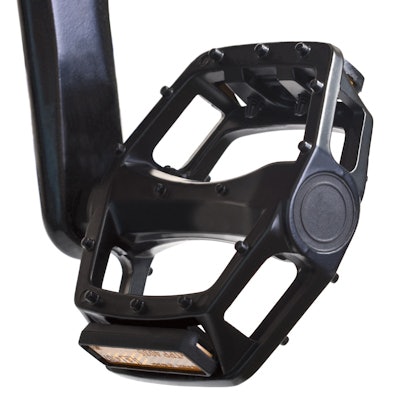
Research has found that a sedentary lifestyle negatively affects one's health and life expectancy, leading to everything from cardiovascular disease to cancer. And if sitting is the new smoking, radiologists are prime candidates to get moving. But how?
 Dr. Vivek Patel from Yale School of Medicine.
Dr. Vivek Patel from Yale School of Medicine.
Dr. Vivek Patel from Yale School of Medicine in New Haven, CT, shared his institution's experience with using under-the-desk cycles to boost radiologists' activity throughout the workday. The study was prompted by his own experience as a resident.
"As an intern, I was used to walking around the hospital on a daily basis and tracking my walking with a pedometer," he told AuntMinnie.com. "After I started radiology residency, my walking was significantly reduced and I started to get back pain. So I looked into methods for keeping active at work, and found [under-the-desk] cycles."
Putting pedal to metal
Patel and colleagues placed 16 cycles (donated by DeskCycle of Greeley, CO) at different radiology workstations. The cycles fit under a desk and can be pedaled without interfering with computer use, Patel said. They have a range of resistance levels and are fairly inexpensive, usually costing less than $200.
The researchers encouraged radiology residents, fellows, and attendings to use the cycles as they wished; after a year, they sent an electronic survey to radiology department staff to assess the effect of the cycles. Thirty-four radiologists responded: 21 were residents, 10 were attending physicians, and three were fellows.
The survey used a five-point rating scale (significantly worsened, -2; worsened, -1; no change, 0; improved, +1; and significantly improved, +2) and asked participants to evaluate the following:
- Job satisfaction
- Overall health
- Energy level
- Workplace mood
- Sitting-related ailments
- Change in sleep
- Self-esteem
- Diagnostic efficiency/productivity
- Diet
- Concentration
- Diagnostic accuracy
Desk cycle users spent an average of 2.3 hours per day, three days per week, using the cycles, at an average resistance level of 3.6 (range, 1-8). They seemed to use the cycles mostly in between reading studies -- for example, while reviewing charts or prior images, discussing cases with residents, or during lunch or breaks, Patel said.
"Our study participants used the cycles less than we expected," he said. "At the end of the study, they told us that they mostly used the machines when they weren't concentrating on images -- which of course limited the time the cycles were used."
Patel's group found statistically significant improvement in subjective job satisfaction, overall health, energy level, workplace mood, and sitting-related ailments. There was no statistically significant change in sleep, self-esteem, diagnostic efficiency/productivity, diet, concentration, and diagnostic accuracy.
 Statistically significant results are outlined in red. Image courtesy of Dr. Vivek Patel.
Statistically significant results are outlined in red. Image courtesy of Dr. Vivek Patel.Ride on
Patel acknowledged that a direct link between the use of the under-the-desk cycles and improvements in job satisfaction and mood can't be proved. And he and his team did not measure objective health parameters before and after the study time frame.
Still, the experiment shows the device's potential as a way to keep radiologists active at work -- and the idea merits more study, according to Patel. In fact, he and his colleagues plan to conduct another research effort using under-the-desk mini-elliptical machines.
"Radiologists are particularly vulnerable to a sedentary workplace compared to other physicians," he said. "It's promising that our study showed that even using the cycles two hours a day was enough to see benefits."




















